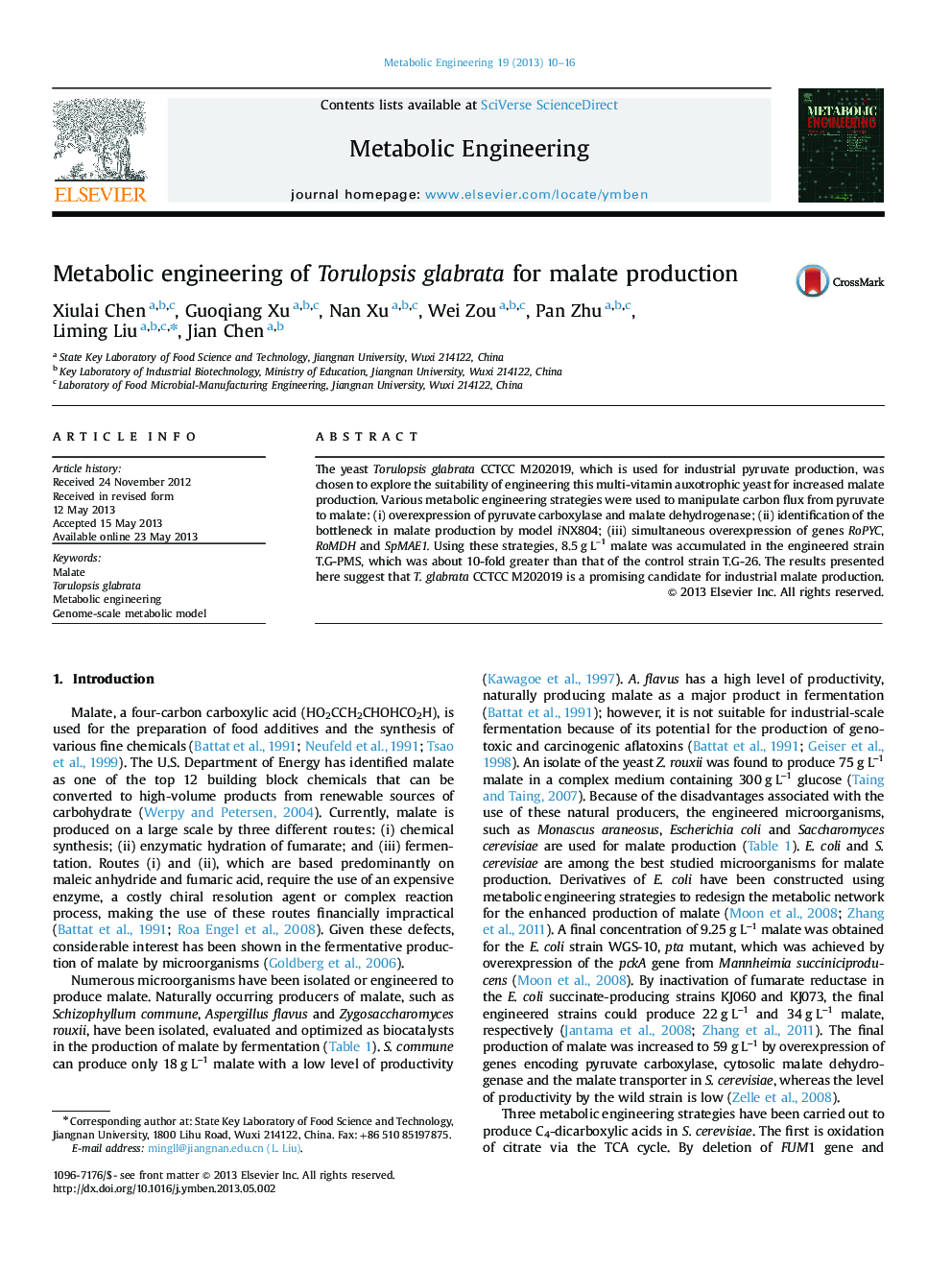| Article ID | Journal | Published Year | Pages | File Type |
|---|---|---|---|---|
| 6494715 | Metabolic Engineering | 2013 | 7 Pages |
Abstract
The yeast Torulopsis glabrata CCTCC M202019, which is used for industrial pyruvate production, was chosen to explore the suitability of engineering this multi-vitamin auxotrophic yeast for increased malate production. Various metabolic engineering strategies were used to manipulate carbon flux from pyruvate to malate: (i) overexpression of pyruvate carboxylase and malate dehydrogenase; (ii) identification of the bottleneck in malate production by model iNX804; (iii) simultaneous overexpression of genes RoPYC, RoMDH and SpMAE1. Using these strategies, 8.5 g L-1 malate was accumulated in the engineered strain T.G-PMS, which was about 10-fold greater than that of the control strain T.G-26. The results presented here suggest that T. glabrata CCTCC M202019 is a promising candidate for industrial malate production.
Related Topics
Physical Sciences and Engineering
Chemical Engineering
Bioengineering
Authors
Xiulai Chen, Guoqiang Xu, Nan Xu, Wei Zou, Pan Zhu, Liming Liu, Jian Chen,
